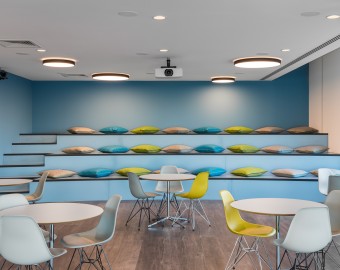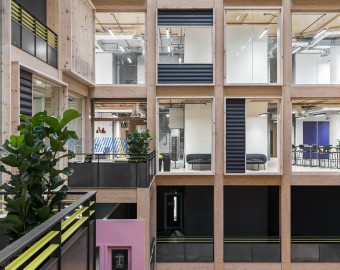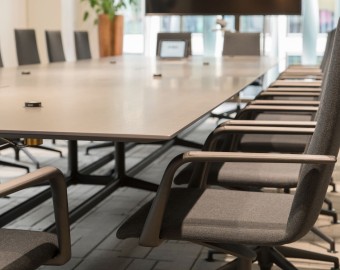Environmentally Friendly Workspaces
The Argument For Green Spaces in The Workplace & Relevance to the Emerging Environmental Crisis
Resourcing everything in your office to go green may seem like a headache not worth the reward. Unecological materials have been used for decades because they’re cheap and easily sourced (MDF, leather, plastic). However the benefits of switching for employee, employer and climate alike are unavoidable. The pressing need for the workspace to be environmentally conscious has never been more relevant, thanks to the zeitgeist stirrings of Greta Thunberg, Extinction Rebellion and David Attenborough. Indeed, a study has proven that the millennial generation is the most ecologically conscious group to enter the work force, preferring to work for employers with a better cognisance of sustainability and upcycling within their office space.

The modern disconnect with nature is a cause of rising stress levels at work
According to the theories of Edward O Wilson, the biologist who popularised the term ‘biophilia’ in the 1980s, humans have developed an evolutionary need to have some sort of daily connection with nature. Wilson argues that the modern disconnect with nature is the cause of rising stress levels in correlation with rising urbanisation. 40% of office workers only get 15 minutes outside a day, a rather depressing statistic – indicative of long hours and lunch breaks spent at desks. A study conducted in the UK and Netherlands found that the addition of plants in the workplace increased productivity by 15% by lowering stress and increasing concentration. WHO (world health organisation) expects stress related illnesses – mental health and cardio vascular disease – to be the leading causes of illness by 2020. Therefore, because of their ability to reduce stress, plants in the workplace seem an increasingly relevant solution to not only workplace productivity, but also to alleviating health problems.

Plants in the workplace help alleviate health problems
Noise pollution can also be reduced by plants when they are introduced into our open plan office spaces as they absorb excess and distracting sound. Air pollution can be improved by plants too, studies by CIPHR have confirmed that dust can be reduced by 20% and that carbon dioxide can be reduced by half when plants are introduced to the workspace. Recently, designers have begun to explore specifying more natural elements into office design, some have begun to use upcycled wood instead of MDF, or even ‘living walls’ which reap all the benefits of pot plants while also saving on space, the same can be done with unique flooring – such as natural stone or wood.
Adding greenery to the workplace is not the only way to harmonise your office with the environment. Nicola Gillen, (@nmgillen on twitter) advocates incorporating wellbeing into the workspace, pointed out at a Copenhagen conference the unsustainable perpetuation of waste culture that comes from gutting an office for every new tenant. Shamefully, construction generates one third of all waste in the EU. Baring this in mind, we should all be more careful in finding a better balance between upcycling and replacement.
In conclusion, there are many ways to consider making your own office space more environmentally friendly. It’s time to refocus upon being sustainable with new vigour and improved knowledge.
Whether you want to start small, or resource your entire office here are some spaces you can start in order to get inspiration:
1. For renting, selling and maintaining plants in the workspace urbanplanters.co.uk
2. Natural finishes for walls innerspacecheshire.co.uk
3. Sustainability in offices magazine, for the latest dezeen.com
Get in touch
To discuss your workspace you can contact us on 01223 656111 or email info@theworkspaceconsultants.com.




